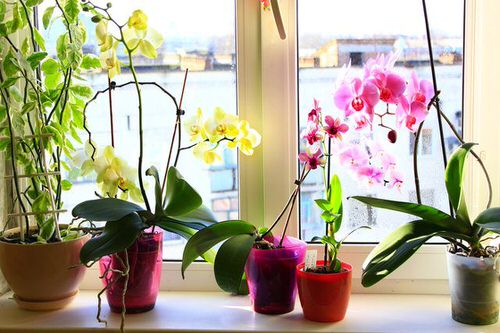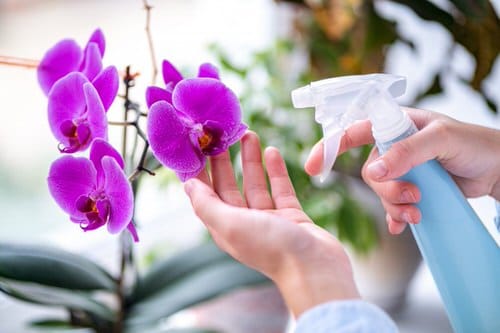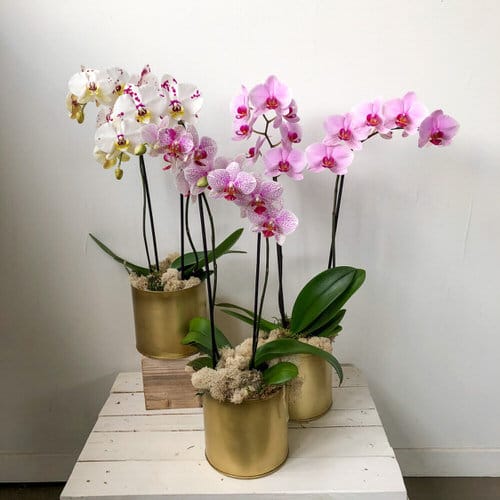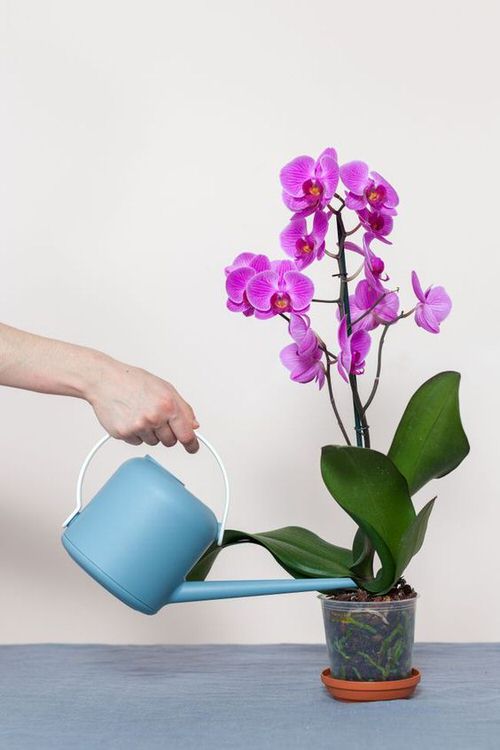Here are some of the most Common Orchid Growing Mistakes that you can avoid to keep the plant thriving with full of flowers!
Common Orchid Growing Mistakes
1. Overwatering

It is one of the most common mistakes that new orchid growers make. Remember, an orchid is not like other houseplants, and as it does not grow in garden soil, its watering needs are different as well. Do not water the plant daily—water it only when the growing medium feels dry. The best time to water is morning time!
- Keep your orchid pot in a sink and run the tepid over the moss or whatever orchid growing medium you’re using to make it moist; make sure the running water won’t damage its foliage or flowers.
- Another way is to place the orchid planter in a bowl filled with water so that the orchid mix can absorb the water well.
- One quick way is just to pour water from a watering can!
- How frequently you water it depends on the climate, but indoors usually once a week, is fine.
Here’s all you need to know about watering orchids
2. Fertlizing the Plant Excessively
People often think that fertilizing the plant frequently will result in more flowers, but that’s not the case with orchids. With too much fertilizer, you can burn their sensitive roots.
- Feed your orchid plants once or twice a month in a half or one-quarter strength, which means only 1/2 of the recommended dose on fertilizer packet.
- Use a fertilizer that contains equal parts of nitrogen, phosphorus, and potassium like 10-10-10 or 20-20-20 and other important micronutrients.
- Generally, you should fertilize with 10-10-10 fertilizer in 1/2 strength and 20-20-20 fertilizer in 1/4 strength.
- One more tip is to fertilize them mostly in the growing season. For example, if you live in a cold climate, you should avoid feeding orchids in winter. Wait for the spring and once you see the signs of active growth, fertilize.
We have a detailed article on Homemade Plant Foods for Orchids here
3. Keeping it in a Cool Spot

If you live in a cool climate, then avoid keeping the plant near a window, where it can catch cold drafts of air. Similarly, keep the plant away from the face of the heating or cooling vent.
Any place where the plant is safe from cold temperatures will be good. Do not expose the plants to temperatures below 50 F (10 C). Also, avoid exposing orchids to sudden temperature changes, whether high or low.
4. Using Hard Water
Using hard water will result in excessive salt and calcium built up around the roots—this will prevent the plant from taking up water and nutrients, resulting in wilted foliage and no flowers.
If your water is hard or contains chlorine, make sure that you are keeping that tap water overnight to help salts settle down. You can also use spring, well, RO, or aquarium water.
5. Keeping it in Direct Sunlight

Some houseplants love sunlight but keeping orchids in direct sunlight exposure is a big no. The maximum you can place them on an east-facing window where the plant can get the mild morning sun for a couple of hours. Filtered sunlight or bright indirect daylight is best for their growth.
6. Not Picking the Right Growing Medium
If you are using garden soil to grow orchids, you are making one of the biggest mistakes! Orchids are particularly sensitive to the growing medium used, and their watering needs vary according to that.
For growing orchids, it is best to use sphagnum peat moss, fir bark, perlite, coconut husk chips, or diatomite. Using a mixture of these materials in equal quantity is also fine.
In any case, avoid using the regular soil and use an orchid mix to grow the plant.
Here are the best Orchid Potting Mix Recipes to make them thrive
7. Misting the Flowers

Orchids love humidity and thrive best in it. However, misting the flowers will result in untimely death and wilting of the blooms.
Mist the foliage if you like but make sure you are not spraying water on the flowers. Keeping the pot on a pebble tray filled with water will help greatly. Otherwise, use a humidifier!
8. Transplanting Orchids While they are Blooming
When the plant is flowering, it means it has directed all its energy in blooming. If you will transplant during this time, then it won’t be able to handle the transplant shock and may even die.
9. Not Giving them Enough Ventilation

Orchids thrive well when they are well ventilated. Avoid crowding them too much with other houseplants. However, you can group several orchids or a few indoor plants together to create a favorable humid environment.
10. Choosing the Wrong Type
Always pick a variety that’s well-suited to the environment you live in. Every orchid has different growing requirements, and thankfully, as they come in thousands of types, it will be easy for you to pick the one that goes best with your needs.
11. Not Re-Potting Them

Repotting ensures that the plant gets a new potting mix, and it also gives you a chance to inspect its roots. It is a good habit to re-pot the plant every 2 years to keep it in the best of its health.
If the roots have not grown much, then you don’t have to use a bigger pot. One thing that you need to ensure is to use a fresh potting mix designed specifically for orchids.
12. Watering the Foliage
Don’t practice overhead watering. Always water the orchid soil, avoiding the leaves and flowers. It will save the plant from diseases, rotting, and wilting.
13. Not Keeping them Clean

Do not just water the plant and forget about it. Make sure that you wipe off the leaves once a week to keep the dust away. Use a soft cotton damp cloth and clean with a gentle hand. It will keep the foliage clean, helping the plant breathe well.
14. Underwatering
Yes, orchid hates overwatering, but this doesn’t mean that you end up underwatering the plant. Low watering will result in the yellowing of leaves and make the plant lose all its buds.
Check the growing medium every 3-4 days and water when it feels dry to touch.
15. Using Too Hot or Cold Water

It is best to ensure that the water is at room temperature before you water the plant. Using too hot or cold water will shock the orchid plant and will also result in root damage.


